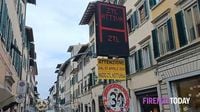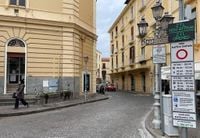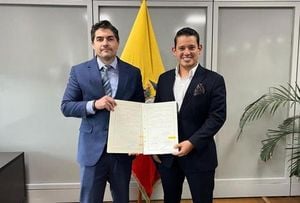As spring approaches, Florence is gearing up for the implementation of its nighttime limited traffic zone (ZTL), which will begin on April 3, 2025. This initiative, lasting until the first Sunday of October, prohibits unauthorized vehicles from entering the historic center from 11 PM to 3 AM. During the rest of the year, the ZTL operates from Monday to Friday between 7:30 AM and 8 PM, and on Saturdays from 7:30 AM to 4 PM. This long-debated topic has sparked discussions among residents, merchants, and local committees regarding the balance between accessibility and preserving the integrity of the city’s historical areas.
Many residents, particularly in the Oltrarno district, support the ZTL, believing it enhances their quality of life. Claudio, a local resident, stated, "I think the ZTL should be active 24/7. It doesn’t cause issues for Florentines; rather, it serves as a relief valve for residents." This sentiment echoes the views of the Oltrarno Futuro committee, which has initiated a petition urging the municipal government to establish a continuous ZTL in the UNESCO area. The petition calls for the installation of electronic gates that would be operational every day, allowing for better regulation of traffic and parking.
Residents have voiced frustration over rampant illegal parking and a lack of available spaces, particularly on Via Romana. Patrizia, another resident, expressed her concerns: "Cars are parked everywhere, and we don’t know where to walk. It’s hard to get around, honestly, I’d prefer having the ZTL." Matilde added that the few parking spots available are often occupied by non-residents, exacerbating the issue.
However, not everyone shares this perspective. Samuele noted that the ZTL creates challenges for visitors, saying, "My girlfriend, who doesn’t live with me, has to park far away and walk to my apartment, especially at night, which isn’t pleasant." He advocates for a balanced approach that considers both the livability of the historic neighborhood and the needs of local businesses.
Speaking of businesses, some merchants in the area believe that the ZTL does not significantly impact their operations. Gennaro, a hairdresser on Via Romana, remarked, "Customers often park in Piazza della Calza or in paid parking and then walk to the shop. It doesn’t change anything for me." Meanwhile, Stefano, who runs a local store, emphasized that the real issues facing merchants are unrelated to the ZTL. He pointed out, "We had many shops here, but now we’re few. Tourists come to see the Pitti Palace and Piazza del Duomo, which are just a short walk away. This street should become a pedestrian area, giving it a commercial sense again."
Riccardo, a taxi driver waiting at the Porta Romana taxi stand, echoed the call for a more stringent ZTL. He explained, "The center of Florence is too small for cars. Delivery vans and suppliers already create enough congestion. Additionally, tourists unfamiliar with the area often block traffic, making it difficult for everyone to navigate." He highlighted the frustration of pedestrians who struggle to access shops due to parked cars obstructing entrances.
Meanwhile, in Sorrento, a similar initiative has taken effect as of April 1, 2025, with the ZTL operational until October 25, 2025. The Sorrento ZTL is active daily from 7:30 PM to 4 AM, with additional hours on holidays from 10 AM to 1 PM. Four electronic gates will monitor access points at key locations throughout the city, including Via Fuorimura and Corso Italia.
Access to the Sorrento ZTL is restricted to holders of annual or temporary permits, with the municipality urging citizens and visitors to comply with the regulations to ensure a more livable environment. The local government has emphasized the importance of these measures in preserving the beauty of Sorrento's historic center while also enhancing the experience for residents and tourists alike.
The implementation of these ZTLs in both Florence and Sorrento reflects a growing trend among Italian cities to prioritize pedestrian access and reduce vehicular congestion in historic areas. As urban centers grapple with the dual pressures of tourism and local living, the challenge remains to find a balance that respects both the needs of residents and the allure of these cultural sites.
As the ZTLs take effect, residents and merchants alike will be closely monitoring the changes, hoping for improvements in traffic flow and parking availability. The ongoing dialogue between local authorities, businesses, and the community will be crucial in shaping the future of these vibrant historic areas.





